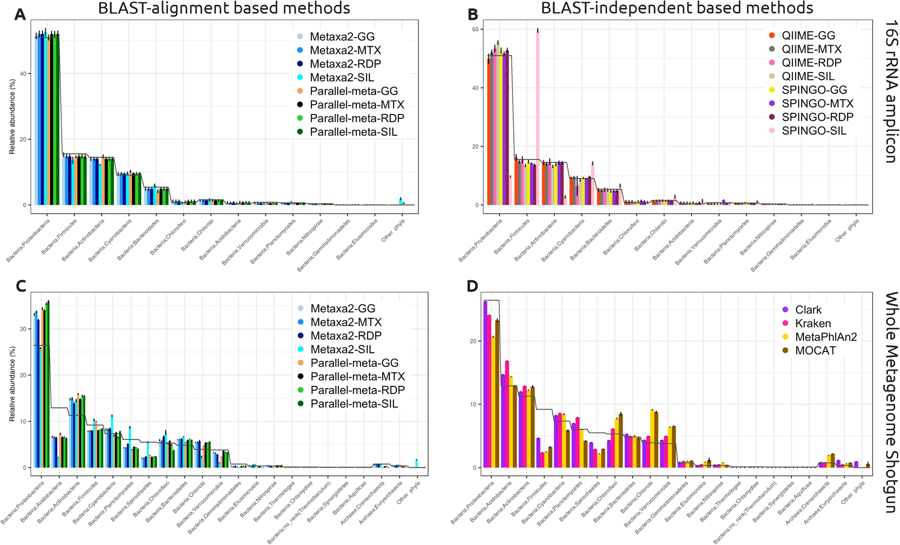Lagrangian Geography of the Deep Gulf of Mexico
P. MIRON AND F. J. BERON-VERA, M. J. OLASCOAGA, G. FROYLAND, P. PÉREZ-BRUNIUS AND J. SHEINBAUM DOI: 10.1175/JPO-D-18-0073.1 ABSTRACT Using trajectories from acoustically tracked (RAFOS) floats in the Gulf of Mexico, we construct a geography of its Lagrangian...
Ice Age Climate Caused Sediment Sourcing 180 in Gulf of Mexico
The onset of the most recent ice age about 2.6 million years ago changed where the western Gulf of Mexico gets its supply of sediments. The finding adds new insight into how extreme climate change can directly impact fundamental geological processes and how those...
Bacterial Diversity and the Geochemical Landscape in the Southwestern Gulf of Mexico
Front. Microbiol., 18 October 2018 | https://doi.org/10.3389/fmicb.2018.02528 E. Ernestina Godoy-Lozano1†, Alejandra Escobar-Zepeda1†, Luciana Raggi1†‡, Enrique Merino1, Rosa Maria Gutierrez-Rios1, Katy Juarez1, Lorenzo Segovia1, Alexei Fedorovish Licea-Navarro2,...High Performance Open Source Lagrangian Oil Spill Model
Andrea Anguiano-García, Olmo Zavala-Romero, Jorge Zavala-Hidalgo, Julio Antonio Lara-Hernández, and Rosario Romero-Centeno DOIhttps://doi.org/10.1007/978-3-030-10448-1_11 Abstract An oil spill particle dispersion model implemented in Julia, a high- performance...
Analysis of sequencing strategies and tools for taxonomic annotation: Defining standards for progressive metagenomics
Abstract Metagenomics research has recently thrived due to DNA sequencing technologies improvement, driving the emergence of new analysis tools and the growth of taxonomic databases. However, there is no all-purpose strategy that can guarantee the best result for a...
Comparative Abundance, Species Composition, and Demographics of Continental Shelf Fish Assemblages throughout the Gulf of Mexico
Steven A. Murawski Ernst B. Peebles Adolfo Gracia John W. Tunnell Jr. Maickel Armenteros First published: 15 June 2018 https://doi.org/10.1002/mcf2.10033 Abstract We analyzed the results of the first comprehensive, systematic, fishery‐independent survey of Gulf of...Analysis of bacterial metagenomes from the Southwestern Gulf of Mexico for pathogens detection
Wendy Escobedo-Hinojosa, Liliana Pardo-López Pathogens and Disease, Volume 75, Issue 5, 31 July 2017, ftx058, https://doi.org/10.1093/femspd/ftx058 Published: 23 May 2017 Abstract Little is known about the diversity of bacteria in the Southwestern Gulf of Mexico. The...
Estudios disciplinarios en el Golfo de México
Newsletter de la Asociación para la Observación de Océanos Globales En el número más reciente del boletín de la Asociación para la Observación de Océanos Globales, la Dra. Sharon Herzka comparte la importancia de desarrollar investigaciones oceanológicas en el Golfo...Monitoreando el Golfo de México
El Dr. Julio Candela, investigador del Departamento de Oceanografía Física, participa en el boletín más reciente de la Asociación para la Observación de los Océanos Globales (POGO, en inglés) y comparte una explicación detallada sobre el monitoreo que se realiza en el...Helminth parasites of finfish commercial aquaculture in Latin America
L.C. Soler-Jiménez†, A.I. Paredes-Trujillo† and V.M. Vidal-Martínez* doi:10.1017/S0022149X16000833 AbstractLatin America has tripled production by aquaculture up to 78 million tonnes in the past 20 years. However, one of the problems that aquaculture is facing is the...Historical biogeography of Temnocephalida (Platyhelminthes, Rhabdocoela): testing the Gondwanan hypothesis
Temnocephalida, a group of small epibiontic worms strictly associated with freshwater hosts, includes 179 taxa in 23 genera, classified in two major groups: Scutarielloidea, distributed in the Palaearctic region, and Temnocephaloidea distributed mainly in the Australian and Neotropical regions. Based on a large-scale spatio-temporal dimension, a biogeographic hypothesis on a Gondwanan scenario was tested.

Recent Comments